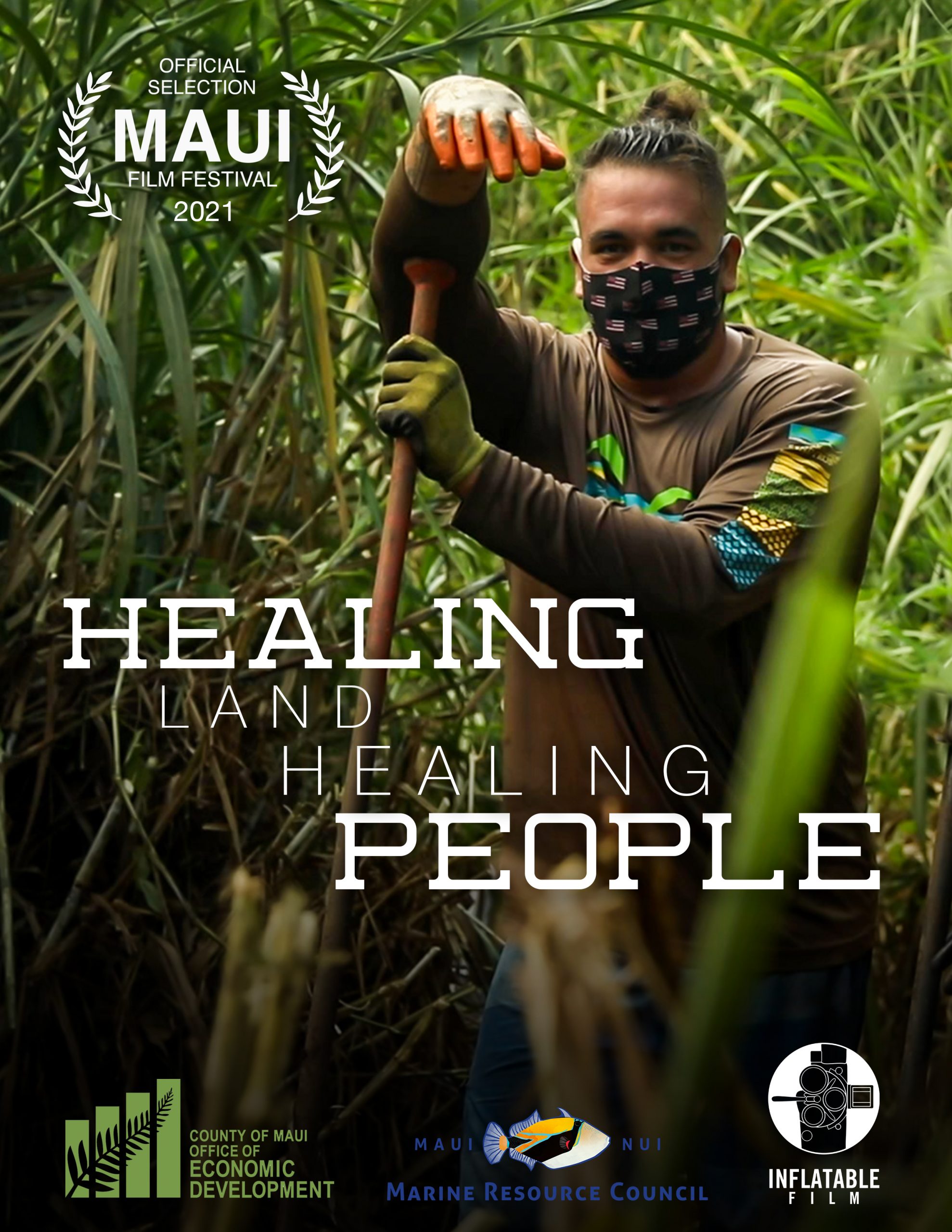At a time when the world was held in the grip of the COVID-19 pandemic and unemployment throughout Hawaiʻi reached staggering levels, more than 70 unemployed and underemployed Maui and Molokai residents were given the opportunity to work on nature-based restoration projects that not only provided paychecks and job skills training – but also reinvigorated deep and meaningful connections to the ʻāina, Hawaiian culture, the power of kuleana and their own sense of purpose.
They were employed by seven local nonprofits — Ka Honu a Momona, Kipahulu ‘Ohana, Hawaiian Islands Land Trust, Ke Ao Hāli‘i, Kipuka Olowalu, Nā Mamo O Mū‘olea and Na Moku ‘Aupuni O Ko‘olau Hui – who joined together with help from Maui Nui Marine Resource Council and guidance by Ekolu Lindsey to obtain Federal CARES Act funding through the County of Maui Office of Economic Developmentʻs Maui CARES program.
View a trailer of Healing Land, Healing People, a film that was created about this unique endeavor. This film was chosen to be part of the upcoming 2021 Maui Film Festival and the Portland Film Festival.
Learn more about the participating nonprofits, the work that was accomplished and their important ongoing efforts in the community. There’s a link for each organization, where you can donate to support their work.
Ka Honua Momona
Ka Honua Momona on Molokai worked to restore two ancient fishponds, which will help trap sediment before it reaches the open ocean – with the benefit of also producing fish for local people. Learn more about this nonprofit organization at: https://kahonuamomona.org/
Kipahulu ‘Ohana
Kipahulu ‘Ohana in East Maui improved a lo’i, or wetland taro farm. The taro plants will slow the flow of stormwater, allowing time for sediment in the water to settle, rather than flow out to sea. Learn more about this nonprofit organization: https://kipahulu.org/
Hawaiian Islands Land Trust
Hawaiian Islands Land Trust in Waiheʻe worked to remove invasive species along approximately 3,000 linear feet of Kalepa Stream to lower sediment loads in the nearshore waters off Waiheʻe and protect offshore corals. Learn more about this nonprofit organization: https://www.hilt.org/
Ke Ao Hāli‘i
Ke Ao Hāli‘i (KAH) in Hana worked on 27 acres of publicly owned land at Mokae/Kaholaiki and another ~2 acres of contiguous land, directly above Hamoa Beach. Their project included invasive plant removal and native habitat restoration for seabirds and insects, and a biological survey of ‘opihi as a baseline for a possible ‘opihi rest area in the future. Learn more about this nonprofit ogranization: https://savehanacoast.org/
Kipuka Olowalu
Kipuka Olowalu in West Maui reestablished washed out and damaged lo’i (taro fields), rebuilt vanished lo’i and prepared lo’i for planting in the Olowalu Cultural Reserve. Workers removed overgrowth, fire hazards and invasive plants; planted native plants and crops and repaired infrasturcture. Learn more about this nonprofit organization at: https://www.kipukaolowalu.com/
Nā Mamo O Mū’olea
Nā Mamo O Mū’oleaa in East Maui focused on land and shoreline management on a county parcel (which Nā Mamo O Mū’olea has a 50-year lease). It included removal of invasive plants around a rock wall that is on the historic registry for future restorations, maintenance of two heiaus on the property, installation of new fencing around an area designated for native trees and medicinal plants, and maintenance and repair of feral animal controls. Learn more at https://www.muolea.org/
Nā Moku ʻAupuni ʻO Koʻolau Hui
Organized in June 1996 as a non-profit organization, Nā Moku ʻAupuni ʻO Koʻolau Hui works to educate, perpetuate, serve and protect the historical, spiritual, traditional and environmental well being of Keʻanae/Wailuanui. Learn more about this organization at https://www.namoku.net/what-we-do



